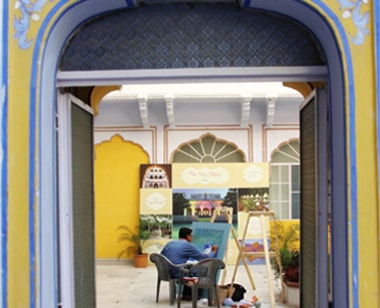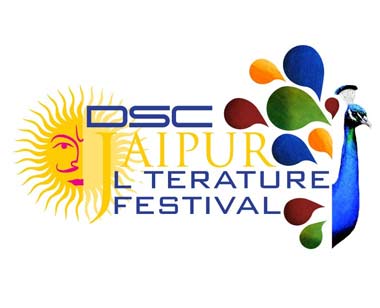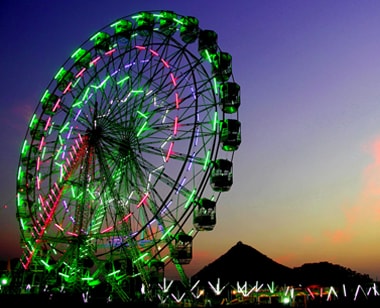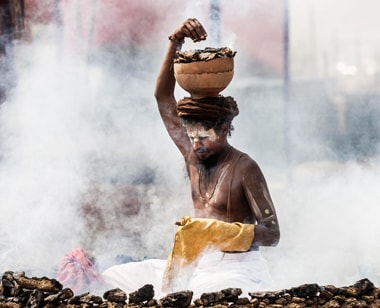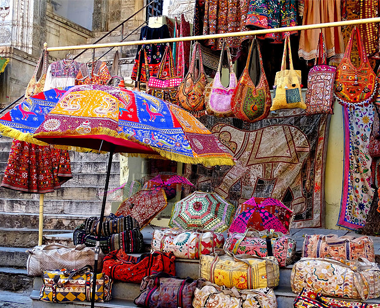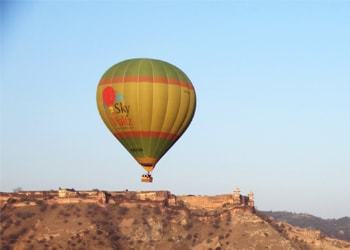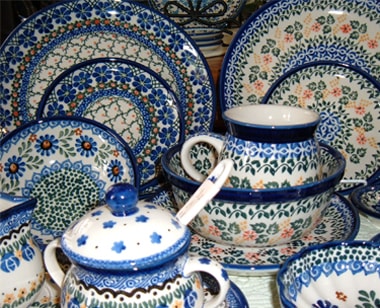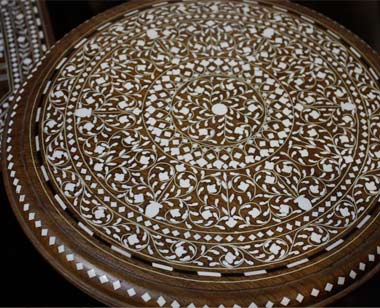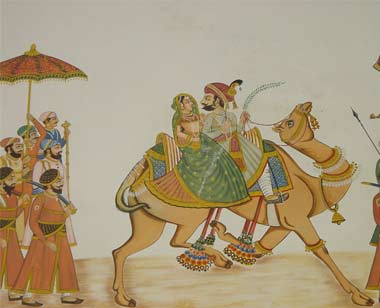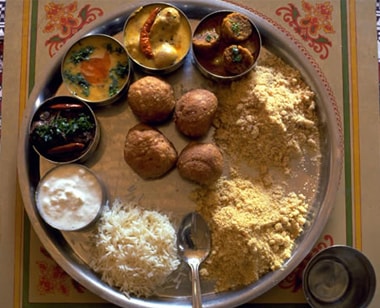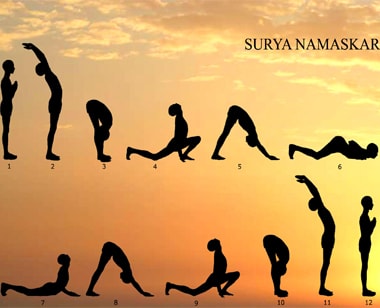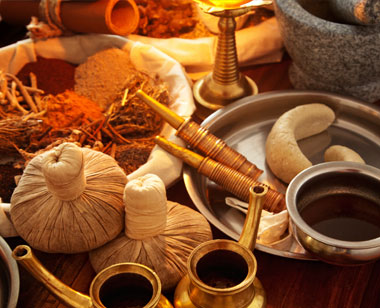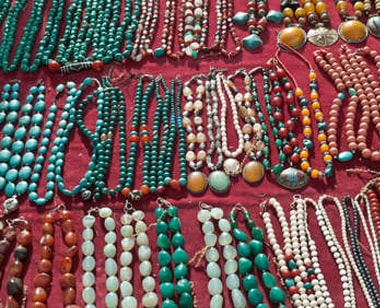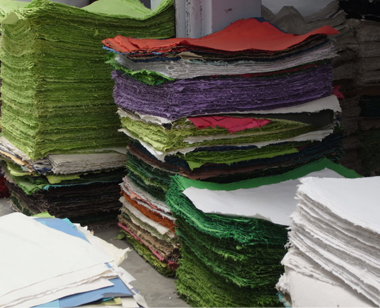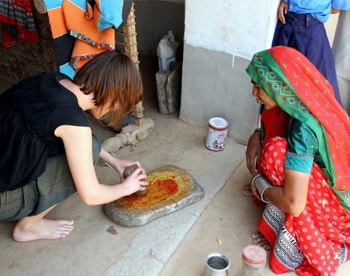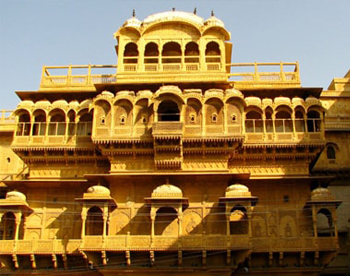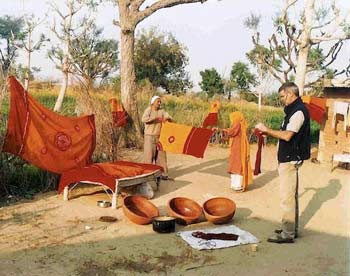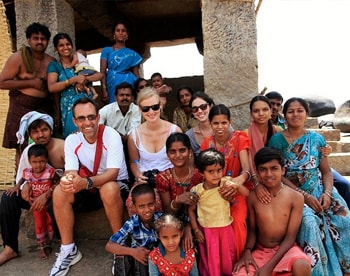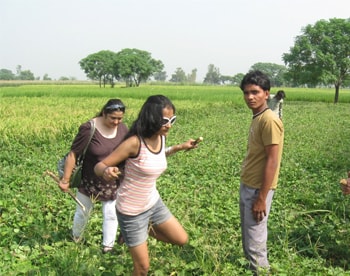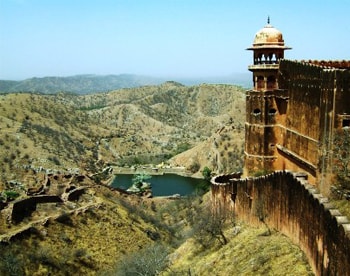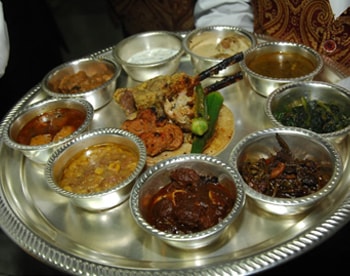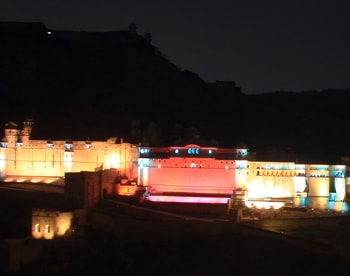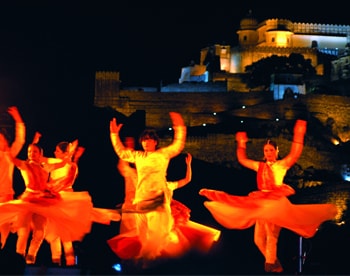Jaipur: The Pink City
Location: Jaipur, is on the Eastern part of Rajasthan
Climate of Jaipur: Summer- 30 °C to 45°C., Winter- 18° C to 5° C
Best time to visit October to March
Language spoken Rajasthani, Hindi, English and Urdu
Attraction Forts, Palaces, Museums, Shopping
Religions Hinduism and Islam
Jaipur
The Capital city of Rajasthan Jaipur is well known as Pink City all around the world. There was the stronghold of a clan of rulers whose three hill forts and series of palaces in the city are important attractions. Known as the Pink City because of the color of the stone used exclusively in the walled city, Jaipur’s bazaars sell embroidered leather shoes, blue pottery, tie and dye scarves and other exotic wares. Western Rajasthan itself forms a convenient circuit, in the heart of the Thar Desert which has shaped its history, lifestyles and architecture. Jaipur was founded by Sawai Jai Singh also known as the Pink City, Because it is designed in pink colour. Jaipur is the most colourful city of Rajasthan, mainly famous for its exotic Forts, Lavish Palaces, evergreen gardens, friendly people and for shopping.
Distance from major cities
Jaipur – Ajmer 131 Kms
Jaipur – Pushkar 145 kms
Jaipur- Alwar 125 Kms towards Delhi
Jaipur – New Delhi 259 Kms
Jaipur – Agra 250 Kms
Jaipur – Udaipur 405 Kms
Jaipur – Jodhpur 336 Kms
Jaipur – Jaisalmer 621 Kms
Jaipur – Mumbai 1202 Kms
Places to Visit
Amer Fort Palace
Amber is the classic romantic Rajasthani fort palace was built in 1592 AD by Maan Singh I. Its construction was started by Man Singh I in 1592, and completed by his descendent Jai Singh I. Its forbidding exterior belies an inner paradise where a beautiful fusion of Mughal and Hindu styles finds its ultimate expression. This exotic fort is famous for its fascinating architecture, there you can enjoy an elephant to approach the Fort.
City Palace
A delightful blend of Mughal and traditional Rajasthan architecture, the City Palace sprawls over one-seventh of the area in the walled city. It was built between 1729-1732 AD by Raja Maan Singh built houses the Chandra Mahal, Shri Govind Dev Temple and the City Palace Museum . City Palace Complex This Palace is the residence of the Maharaja of Jaipur.
It occupies a large area divided into a series of gardens, courtyards, gardens and buildings. The palace is the blend of Rajasthani & Mughal architecture, now converted into a museum & houses unique antiques. Visiting Hours 9:30 am – 5:00 pm
Old City is the actual known as Pink City The old city is partially encircled by a crenellated wall – the major gates are Chand Pol, Suraj Pol, Ajmeri gate & Sanganeri gate and thus is also known as the walled city. The mains bazaars in the city are Johri Bazar mainly known as because one can shop here for jewellery, precious and semi precious stones. In Bapu bazaar one can exclusively shop for clothes of hand block printing, batick, tie and dye, mirror work. The others Nehru Bazaar, Tripolia Bazaar and Chand Pol Bazaar are worth visiting
Hawa Mahal
The ornamental facade of this “Palace of Winds” is a prominent landmark in Jaipur. Their five-storey structures of sandstone plastered pink encrusted with fine trelliswork and elaborate balconies. The palace has 953 niches and windows. Built in 1799 by Pratap Singh, the Mahal was a royal grandstand for the palace women. This Wind Palace was specially made for royal ladies to see the city activities of the city specially during the festivals (Teej maata ki savari) and fairs. Visiting Hours 9:30 am – 5:00 pm
Jaigarh Fort
The Jaigarh fort is the most tremendous of the three-hilltop forts that overlook Jaipur. It was built by Sawai Jai Sigh in 1726 AD for military purpose. This fort houses the largest cannon called “Jaiban”
In Mughal times, the Jaipur area was a major weapon-preparing place for the Mughal and Rajput rulers, a few of the weapons being on showcase in the fort gallery. It is one of the few military structures of medieval India. A silo, a well-planned cannon foundry, some temples, a tall tower and mammoth mounted cannon-the Jai Ban (Jaivan) which is the largest cannon on wheels in the planet.
Jaigarh Fort is also known as the fort of victory. The display includes a collection of canons, many of which are exquisitely decorated and were used in the Mughal campaigns led by the Rajput King, Raja Man Singh. Out of the three forts, Jaigarh is the most drastically encroaching. Jaigarh means `Victory Fort’ and and was built between the 15th and the 18th century AD, and stands 15 km from Jaipur, in the middle of rock-strewn, thorn-clean veiled knolls, its denying stone bulwarks being visible from the Jaipur town. A steep way runs over up to the main door, the Dungar Darwaza, from where the view is inspiring. Visiting Hours 9:00 am -5:00 pm
Nahargarh Fort
Nahargarh Fort, also known as Tiger Fort, is perched high on the rugged Aravali Hills overlooking Jaipur city. The fort was built 1734 to help defend the city. It came to lime light in 2006, after many scenes from the movie Rang De Basanti were filmed there.
Nahargarh Fort offers spectacular views, which are best seen at sunset. It also makes a great place for a picnic as there’s a cafe on the premises, which serves beer and snacks until 10 p.m. The fort looks particularly attractive at night when it’s lit up.
Galta Ji
Holy Hindu temple, nestled in peaceful surroundings between two granite cliffs, is quite an adventure but it’s completely worth the effort. The temple is part of a larger temple complex, which also has three sacred pools of water. One of the pools has been taken over by thousands of monkeys that congregate there to swim and bathe. So it is also popularly known as the Monkey temple. They is generally friendly and love to be fed. Unfortunately, the area is not well maintained and is in ruins Be prepared to encounter dirty and trash, as well as priests and pseudo holy men coercing people for money.
Jantar Mantar
Highlight Listed on UNESCO World Heritage List
Renovated By Major Arthur Garrett
Managed By Government of Rajasthan
Visiting Hours 9:00 AM to 4:30 PM everyday
Jantar Mantar, built between 1728 and 1734, by Maharaja Jai Singh II actually denotes the ‘instruments for measuring the harmony of the heavens’. Jai Singh, the brain behind the grand project, picked stone with marble facing. This was the largest of all his observatories and the one exclusive built of stone. He utilized it day by day, frequently with his astronomy gurus Pandit Jagannath and Kewal Slam to study the position & movement of the planets.
In all there are 17 instruments in the Jantar Mantar complex. The function of each instrument is rather complex but serves a particular function where time plays the main theme.This is the largest and the best preserved of the five observatories built by Jai Singh II in different parts of the country. This observatory consisting of outsized astronomical instruments is still in use.
Albert Hall Museum
Albert Hall Museum or the Central Museum, situated in the heart of the city, sited amid the gardens of Ram Niwas Bagh in Jaipur, is one of the oldest museums in the state of Rajasthan . The Albert Hall Museum is modeled on the Albert Museum of London and represents the Indo-Saracenic style of architecture. This museum was designed and crafted by Colonel Sir Swinton Jacob in 1876 for the purpose of greeting King Edward VII, Prince of Wales on his visit to India.
The museum exhibits a rare collection of ancient stuffs including miniature paintings, carpets, metal and wood crafts, toys, dolls, arms and weapons and an Egyptian mummy belonging to the Ptolemaic Era. The most extraordinary of them is the carpet that depicts the scene of a Persian garden with gushing streams. This carpet was bought by Mirza Raja Jai Singh I at a dear price from Shah Abbas of Persia.
The galleries on the ground floor of the museum display jewelry and dresses that belong to the people of all sections of the society of Rajasthan.
Thus there is an exhibition of the apparels of the privileged class consisting of the Rajputs and the wealthy merchants and the also the garments of the varied tribes of Rajasthan including the Bhils, Meenas, Bhopas, Gadoliya and Lohars.
While walking through this gallery one can have an insight of the culture and lifestyle of the Rajasthani tribes.
One gallery of this museum is dedicated entirely to the illustrious henna body art of Rajasthan art and this gallery is known as ‘Mehndi Mandana’. This gallery exhibits the typical Rajasthani patterns and motifs that are uniquely considered as ethnic throughout the world.
Another gallery displays the puppets and the Phad paintings, the central gallery exhibits the Rajasthani music and dance forms.
Jal Mahal Jaipur, the Water Palace
A beautiful Jal Mahal, the Water Palace is also the center of attraction amidst the tourists This low-rise symmetrical palace, was once a shooting lodge for the Maharajah, appears to float in the centre of Sagar Lake. The light sand colored stone walls of the Jal Mahal Jaipur are at a stark contrast to the deep blue of the waters of the lake. This majestic scene makes the Jal Mahal Jaipur’s most photographed (and photograph friendly) monument but unfortunately exploration of the actual palace is off limits to the majority of visitors as it is to be transformed into an ultra exclusive restaurant.
Birla Mandir
The Birla Temple, originally known as Lakshmi Narayan Temple, and is situated below the Moti Dungri Fort in Jaipur. Dedicated to Lord Vishnu and Goddess Lakshmi, this temple is a immense architectural landmark of Jaipur. Built in pure white marble, the Birla Temple is unlike the traditional ancient Hindu temples, and is built with a modern approach. Inside this magnificent shrine, beautifully sculpted idols of Lord Vishnu and Goddess Lakshmi, as well as other Hindu Gods and Goddesses, can be seen. Delicate carvings of Hindu symbols, and ancient quotes from the Geeta and the Upanishads ornament the walls of this fascinating temple. One can also recognize the mythological events engraved on the walls. Apart from the religious idols, pictures and figures of several religious saints, philosophers and historical achievers, like Socrates, Buddha, Zarathustra and Confucius, are also included in the temple. A work of art, this temple truly represents architectural beauty, in a modern form. The regular visiting hours are between, 8.00 AM to 12.00 Noon and 4.00 PM to 8.00 PM every day.
Raj Mandir:
Rajmandir was the dream of Shri Mehtab chandra Golcha who wanted a cinema hall that will cross the boundary of traditional cinema and will showcase more than just movie. He wanted a cinema hall that could hold his audience for his style and elegance. Cinemas that will make his audience feel like a royal guest of a palace and are invited for a complete entertainment. Rajmandir was his idea that has proud India and over the years has witnessed many movie premiers, and has become one of the most popular tourist places of Jaipur. Rajmandir is owned by Bhuramal Rajmal Surana, the reputed jewellers of Jaipur for 250 Years.
Places to see in Modern Jaipur
World Trade Park,
Entertainment Paradise,
Different Shopping Malls
How to reach Jaipur
Jaipur, being the capital of Rajasthan it is easily accessible by all means.
Air: Flights are available to all major cities like New Delhi, Mumbai, Udaipur, Jodhpur, flights to Kolkata is also available.
Rails: It is well connected by many express and superfast Trains to many metropolitan and other major cities of India. Shatabdi, Rajdhani Express, the most recent Double Decker train runs to and fro from Jaipur to Delhi each day. An exclusive effort made by the RTDC is a Luxurious Train Palace on Wheels.
Road: You can hire a cab from New Delhi or can pick the Volvo – Bus provided by the Rajasthan Govt.
Places around Jaipur
Siriska National Park
The Sariska National, in the Aravali Hills and located in the district of Alwar, was declared a wildlife sanctuary in 1958 and was included in the “Project Tiger” as a tiger reserve in 1979. The park encompasses a sprawling area of 800 square kilometers and is the abode of a range of diverse flora, fauna. The wild life enthusiast can reach Sariska National Park by air, rail or road.
Ajmer
Pushkar
Samode
* kindly double check the exact travel distance & the train/flight timing with us in case of any last minute changes.
TEMPERATURE & RAINFALL AROUND THE YEAR
January to March
50F – 80F
10°C – 27°C
4MM – 7MM
April to June
75F – 105F
24°C – 45°C
11MM – 30MM
July to September
70F – 95F
21°C – 35°C
100MM – 165MM
October to December
55F – 85F
13°C – 30°C
3MM – 8MM
 +919828167660, +919414075013
+919828167660, +919414075013

